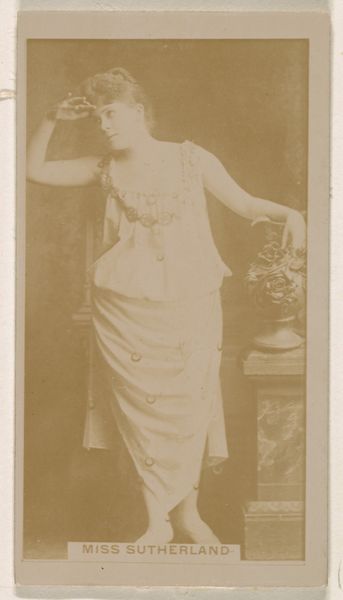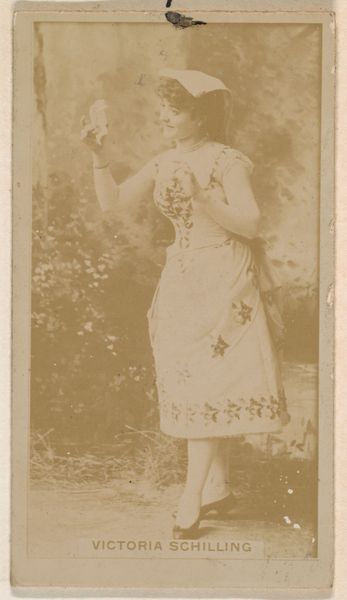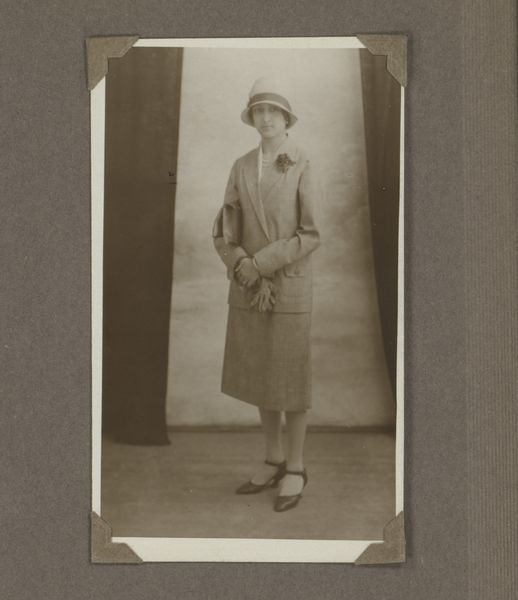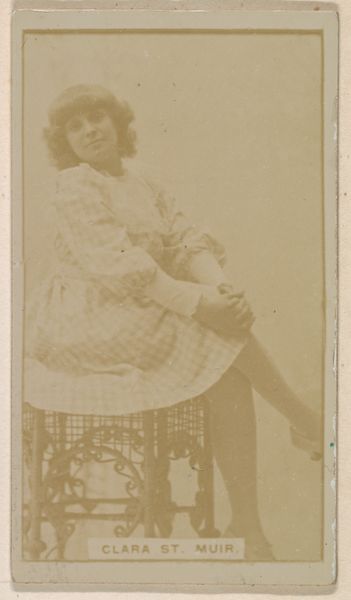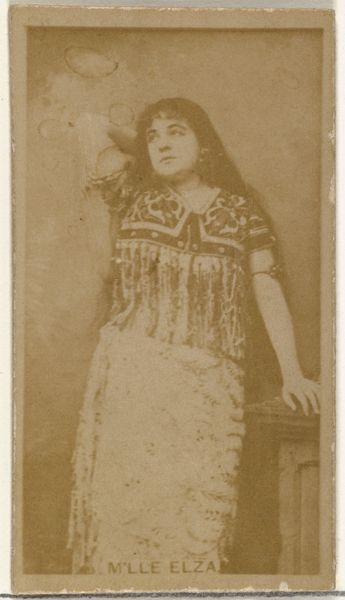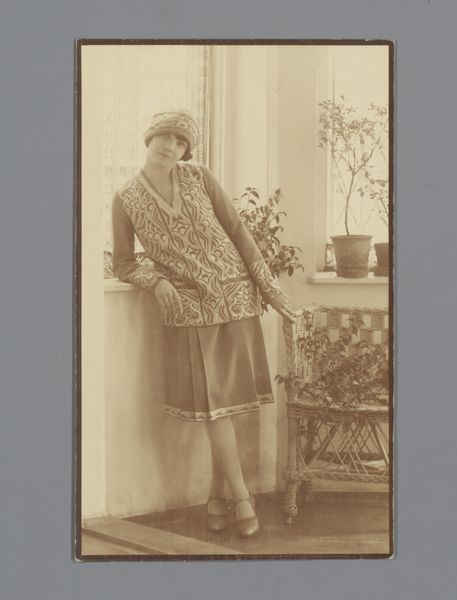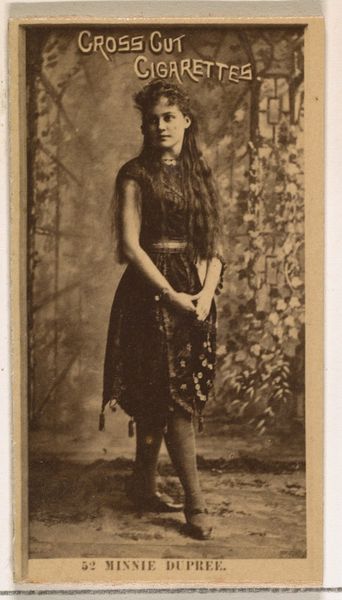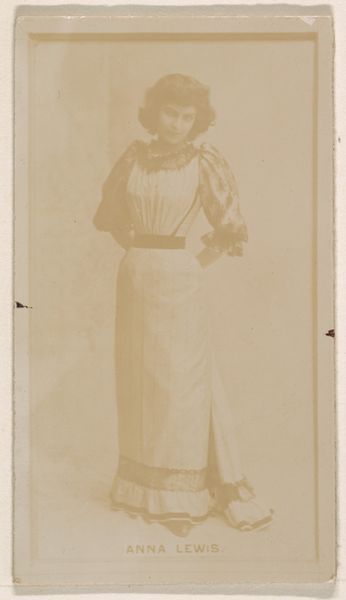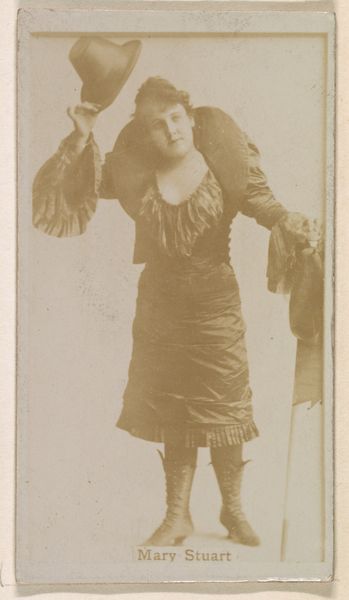
photography
#
portrait
#
pictorialism
#
photography
#
photojournalism
Dimensions: height 285 mm, width 209 mm, height 335 mm, width 245 mm
Copyright: Rijks Museum: Open Domain
Editor: This is a photograph titled "Portret van een onbekende vrouw, mogelijk een Duitse actrice," placing it around 1910 to 1918, created by Ernst Sandau. The detail in that coat is incredible; you can even see animal figures! What story do you think this image tells? Curator: Considering this work within the history of photojournalism and portraiture, the question of representation comes to mind. Who was Sandau photographing, and what role did studios play in shaping public images? Notice how the woman is posed, and think about how this photo would have circulated – a family memento, publicity for the stage? How might the subject herself have perceived this representation? Editor: So, it's not just a picture, but also about the relationship between the photographer, the subject, and the potential audience? Curator: Exactly. Pictorialism often aimed for painterly effects in photography, elevating it to a fine art. But by 1910, photography was becoming increasingly integrated into everyday life. The image operates within both those realms - hinting at wealth and status. But think, also, how class and gender informed how this actress would have been perceived and portrayed. This raises questions around the ownership of the image. Editor: It's fascinating to consider that interplay, especially the potential societal constraints that affect an actress's representation. I didn't consider the social and political layers at play within something seemingly so simple. Curator: Yes, photographs weren’t merely neutral recordings; they were active participants in shaping cultural narratives, particularly when disseminated in public or political realms. How photographs are understood and used plays a role in what it communicates and its importance as source material. Editor: Thinking about its historical context gives the photograph new meaning to consider, rather than only the aesthetics and artistry. Thanks for that different insight!
Comments
No comments
Be the first to comment and join the conversation on the ultimate creative platform.

